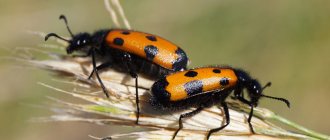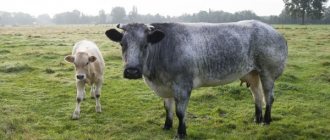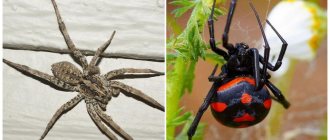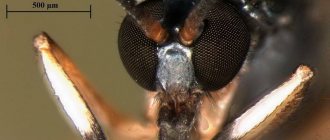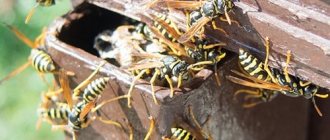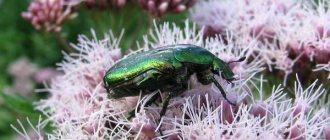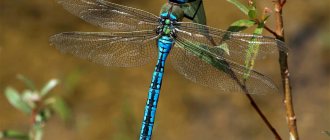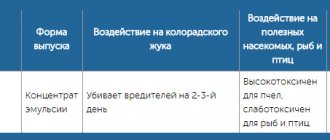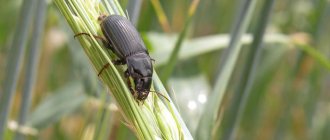Red Wiki of the Volgograd region
RedWiki is a free, unofficial guide to rare and protected species of fauna and flora of the Volgograd region.
The project has no formal relation to the official Red Book of the Volgograd Region (although it was initially based largely on the use of its openly published materials) and the government body responsible for maintaining it.
RedWiki materials are compiled by independent professional experts on a non-commercial basis, using both their own data and open sources available to them - which largely deprives the project of both bias and errors associated with the low qualifications of the authors. The mission of the RedWiki project - Red Wiki of the Volgograd Region - is to serve as a high-quality independent source of information about rare species of the Volgograd Region for any interested members of the public and professional community.
Despite its unofficial status, already at the time of its creation RedWiki is the most accessible, complete, reliable and up-to-date source of information about rare species of the Volgograd region of all existing ones
, including official publications of the Red Book. Of course, the resource administration will make every possible effort to ensure that this free directory becomes even more complete and reliable in the future.
RedWiki readers can use either the taxon catalog
, or
by searching the directory
to find the information they are interested in.
Information about official documents related to maintaining the Red Book of the Volgograd Region is located in the Documents
.
Information about the authors of the reference book is in the Authors
.
Editing of RedWiki is possible only by professional experts in the field of biodiversity of the Volgograd region at the invitation and consent of already registered authors. If you are such an expert and would like to take part in the work on the reference book, just contact any of the authors or the owner of the resource: your participation will be a great honor for the project. The rules and recommendations of the administration for authors can be found on the corresponding page
- reading it may also be useful for readers to understand the general principles of compiling the directory.
All names of taxa in RedWiki and their taxonomic position are given in strict accordance with the current lists of species officially approved by the administration of the Volgograd region
(if available in them).
Even if they seem strange, erroneous or absurd (and at the time of creation of the directory this is often the case) - all questions about this should be directed to the persons who compiled and approved the lists from the Documents section, and not to the project participants. The reference book in front of the reader is in this regard only a mirror of official documents, and asking the mirror questions about the shortcomings of the original is, as is known, somewhat unpopular. The authors of the directory can only be responsible for the accuracy of the information about taxa provided by them personally, and only with their reputation
.
Otherwise, the directory data is provided to the reader “as is” - without guarantees and without any participation in their subsequent independent use
, no matter what consequences it may lead to. At the same time, the administration and authors of the resource, of course, will be glad to receive any objective feedback and constructive comments that help improve the project.
RedWiki is a free reference book, but its freedom does not mean permissiveness and irresponsibility. All reference materials are provided under the terms of the Creative Commons “Attribution-NonCommercial-ShareAlike” license
(“Attribution - Non-Commercial Use - Same Terms”).
All license terms can be found in detail here
. In short, the RedWiki licensing terms mean the following:
- The RedWiki Content may be used by anyone for any purpose
(including modifications or derivative works) as long as there
is no financial or monetary compensation involved
. - All users of RedWiki materials are required to clearly indicate their author
, and also to publish all works based on RedWiki materials
only under identical conditions
. - RedWiki materials may not be used by anyone for material or monetary reward under any circumstances
.
Such purposes include, for example, work on any commercial projects, including research funded from any sources other than the personal funds of their performers, as well as the preparation of any printed and electronic materials (in particular, official publications of the Red Books) for material remuneration. Of course, this restriction cannot apply to the open sources themselves used by the authors of RedWiki, and only applies to materials prepared and provided by the authors personally
. In addition, the publication of materials in RedWiki, of course, in no way implies any alienation of the rights of their authors, and the author himself can use the information presented in RedWiki simultaneously, independently of this directory, in any other way anywhere, including under any agreement - both those that generate income for the author and those that are free of charge. So anyone who wants to use RedWiki materials for commercial purposes or on terms other than the project license can contact their direct authors to conclude a separate agreement with them “outside the walls” of the directory, otherwise both the author of the material and the owner of the resource will have legal grounds for prosecution of all persons associated with the use of these materials in violation of the project license.
Support the site
Taxonomic affiliation:
Class - Insects (Insecta), series - Hymenoptera (Hymenoptera), family - True bees (Apidae). One of 10 species of the Holarctic subgenus Subterraneobombus, a worldwide widespread (with the exception of South Africa, Australia and New Zealand, where it was specially introduced) of the genus Bombus (more than 250 species). One of 40 species of bumblebees in the fauna of Ukraine.
Conservation status:
Vanishing.
Range of the species and its distribution in Ukraine:
Distributed in the steppes of the central part of the Palaearctic from Slovakia, Hungary to the West. China, p. Iran and s. Mongolia; in Ukraine it is found in the steppe zone. Over the past 100 years, the species' distribution has declined significantly. In particular, it almost disappeared from most of the territory of Crimea, where it was found in the beginning - middle of the last century (modern finds are only on the territory of the Kerch Peninsula). Also, previously there were isolated finds of the species in the forest-steppe zone.
Number and reasons for its change
Endangered species, found locally. In some biotopes, the density of the species can reach up to 2-3 nests per 1 ha. Disappears through a reduction in the area of steppe areas and the destruction of nests during haymaking and plowing, the death of adults, and when fields are treated with pesticides. This is the largest species of bumblebee and can be prey for collectors.
Features of biology and scientific significance:
Anthophile, feeds on nectar and pollen of plants, an important pollinator of many plants. Social view. Females are fertilized by males in the fall, after which they overwinter underground in the burrows of mouse-like rodents or under moss or leaves, and in the spring, each young queen independently builds a nest on the surface of the ground or in rodent burrows. Unlike most other types of bumblebees, queens lay their eggs not in groups of 6-10 pieces, but each in separate cells. This biological feature makes this species promising for artificial breeding. 50-100 working individuals are raised in the nest, after which approximately the same number of reproductive individuals - males and future queens; The uterus reaches sexual maturity in the spring of next year; queens live 1 year, and workers from 1 to 3 months.
Morphological characteristics:
The body length of the uterus is 28-35 mm, of males - 18-23 mm. The body is black, the wings are darkened. On the back between the wings there is a continuous band of black hairs with clear edges, the other part is covered with thick yellow hairs. The edges of the hind tibiae are covered with black hairs. The entire abdomen is covered with yellow hairs. The forehead and a small part of the crown are covered with black hairs.
Population conservation regime and protection measures:
Protected in reserves of the steppe zone. It is necessary to create reserves and new reserves in other places where the species lives.
Reproduction and breeding in specially created conditions:
It has not been carried out, but this species may be promising for artificial breeding on an industrial scale for plant pollination.
Economic and commercial significance:
Pollinator of many steppe plants and those cultivated in the steppe zone of Ukraine, in particular melons.
Red Book
- Back to the main page
AnimalsMammals - Mammalia Birds - Aves Reptiles - Reptilia Amphibians - Amphibia Fishes and cyclostomes Insects - Insecta Crustaceans - Crustacea Molluscs - Mollusca Worms, bryozoans, brachiopods
Plants Angiosperms or flowering Gymnosperms Ferns Lycopods Bryophytes Lichens Mushrooms
The Red Book of Russia includes rare and endangered animals, plants and fungi, permanently or temporarily living in a state of natural freedom on the territory, continental shelf and maritime economic zone of the Russian Federation, which require special state-legal actions within the competence of federal executive bodies authorities. Maintaining and publishing the Red Data Book of the Russian Federation is also the fulfillment of Russia’s obligations under the Convention on Biological Diversity adopted in 1992 in Rio de Janeiro. For the first time, the Red Book, including objects of the animal world (Red Book of the RSFSR), was published in 1983. The preparation and implementation of this publication was carried out by the Main Directorate of Hunting and Nature Reserves under the Council of Ministers of the RSFSR (Glavokhota RSFSR). Its scientific support was carried out by the Central Scientific Research Laboratory of Hunting and Nature Reserves of Glavokhoty of the RSFSR (TsNIL Glavokhoty of the RSFSR, currently the State Institution “Control Information and Analytical Center of Game Animals and Their Habitats” of the Ministry of Agriculture and Food of Russia) in collaboration with zoologists from academic and other leading scientific institutions Russia.
In accordance with current legislation, the Red Book should have been published at least once every 10 years. The compilation and coordination of lists of fauna objects to be included in it continued almost immediately after the publication of the Red Book of the RSFSR in 1983. The Central Scientific Research Laboratory of Glavohoty of the RSFSR collected a significant part of the materials for the preparation of species essays for the Red Book. Subsequent events in the country brought significant changes to the work begun. Ensuring the preparation of the final edition of the Red Book of the Russian Federation and its publication were carried out by the Institute of Ecology and Evolution. D. N. Severtsov Russian Academy of Sciences.
With the formation of the system of environmental authorities in 1988, the function of maintaining the Red Book of Russia transferred to the Ministry of Natural Resources of Russia - now the Ministry of Natural Resources of the Russian Federation. Scientific support for its implementation is provided by the Russian Academy of Sciences and the All-Russian Research Institute for Nature Conservation. In 1992, the Commission on Rare and Endangered Animals, Plants and Fungi was created under the Russian Ministry of Natural Resources, which includes special sections and working groups of experts.
In 1994, the Commission reviewed the results of the work carried out and recommended that the Russian Ministry of Natural Resources begin official procedures for agreeing with the administrations of the constituent entities of the Russian Federation and interested federal executive authorities on the list of wildlife objects included in the Red Book, and three annexes to which the jurisdiction of the Red Book does not apply. Coordination of the list with the constituent entities of the Russian Federation and federal ministries and departments took about two years. In parallel, work was carried out to create regulatory legal acts that ensure the maintenance of the Red Book, monitoring and protection of objects included in it.
It was taken into account that objects that require special protection measures at the federal level are included in the national Red Book. These measures should ensure, among other things, control and implementation of Russia’s international obligations to preserve such objects, coordination of state activities between the subjects of the federation and state control over the preservation of an object living within only one subject of the federation, if its disappearance from this territory entails the loss of this object from the fauna of Russia.
The Red Book of the Russian Federation adopts six categories of rarity of taxa and populations according to the degree of threat of their extinction: 0 - probably extinct, 1 - endangered, 2 - declining in numbers, 3 - rare, 4 - uncertain status, 5 - recovering and recovering.
Probably extinct include taxa and populations previously known from the territory (water area) of the Russian Federation, the presence of representatives of which in nature has not been confirmed (for invertebrates - in the last 100 years, for vertebrates - in the last 50 years). The endangered category includes taxa and populations whose numbers have declined to critical levels such that they are likely to become extinct in the near future. Declining numbers include taxa and populations with steadily declining numbers that can quickly fall into the category of endangered. Rare are taxa and populations that are small in number and/or distributed over a limited area (water area) or sporadically distributed over large areas (water area). Undetermined status includes those taxa and populations that require special protection measures, but for which there is currently insufficient information, or they do not fully meet the criteria of all other categories. Recoverable and recovering are those taxa and populations whose numbers and distribution, due to natural causes or as a result of conservation measures taken, have begun to recover and are approaching a state where they will not require urgent conservation and restoration measures.
Taking into account the diversity of fauna and the scale of the territory of our country, the revision of the environmental status and rarity categories of representatives of the animal world was carried out on the basis of consultations with specialists from more than 70 institutions of the Russian Academy of Sciences, other leading central and regional scientific and higher educational institutions. The large number and extremely poor knowledge of invertebrate species, the practical difficulty of their identification by environmental officials predetermined the possibility of including in the Red Book only forms belonging to the first three categories, and primarily the largest and most spectacular species, which often become objects of increased interest to collectors.
More than 100 specialists from institutions of the Russian Academy of Sciences, the State Committee of the Russian Federation for Environmental Protection, nature reserves, other central and regional scientific institutions, and higher educational institutions took part in writing the species essays.
A lot of organizational work on preparing the final edition and providing this edition of the Red Book of the Russian Federation was carried out by the Institute of Ecology and Evolution. A. N. Severtsov RAS. The editorial board and the authors of the essays express their deep gratitude to everyone who made their unpublished data available to them. Significant assistance in collecting and editing species sketches was provided by E. N. Matyushkin, N. B. Nikitsky, V. E. Prisyazhnyuk, A. V. Sviridov, B. R. Striganova. Color drawings were made by animal artists N. N. Kondakov, V. M. Gudkov, N. V. Panteleev, N. Yu. Burskaya from the stock collections of the Zoological Museum of Moscow University, the Institute of Ecology and Evolution. A. N. Severtsov RAS and Zoological Institute RAS. Additional illustrative material is presented in the form of color photographs taken by many photographers. Technical assistance in preparing the manuscript was provided by E. N. Bukvareva, T. I. Varlygina, S. V. Vostokov, A. P. Mezhnev, S. V. Naidenko, T. N. Petrina, A. V. Solokha, A. V. Sochivko.
